Dual-Motor EVs Could Make Limited-Slip Differentials Obsolete
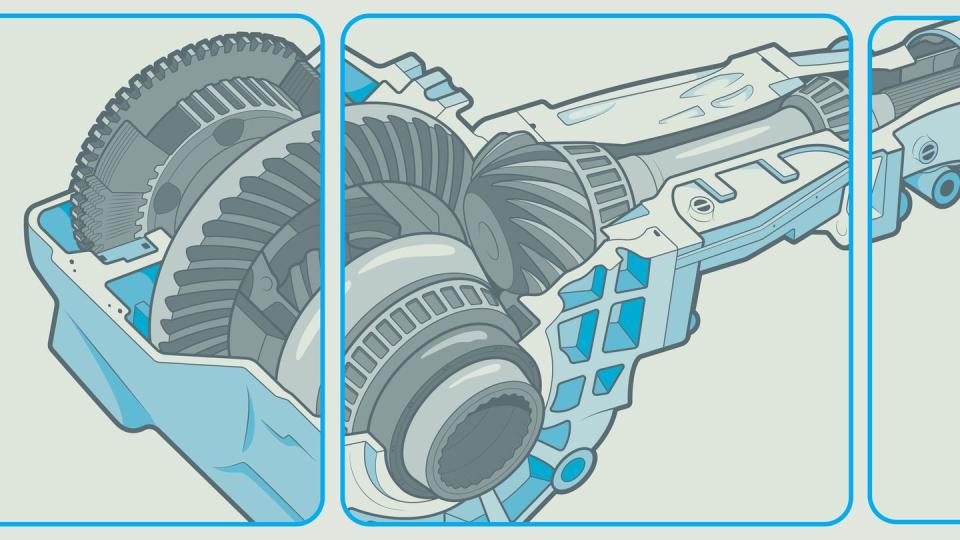
If you’ve ever shopped for a sports car, you’ll often hear the term “limited-slip differential” (or LSD); you’re probably aware that it’s better than not having one, but it can be unclear exactly what it does. In Mad-Man-esque ad terms, Chevrolet (in 1959) proclaimed that cars with “Positraction” limited-slip differentials offered “protection from swerve [sic] on bumpy roads” and “positive pulling power in mud and snow” which… doesn’t make anything clearer, admittedly.
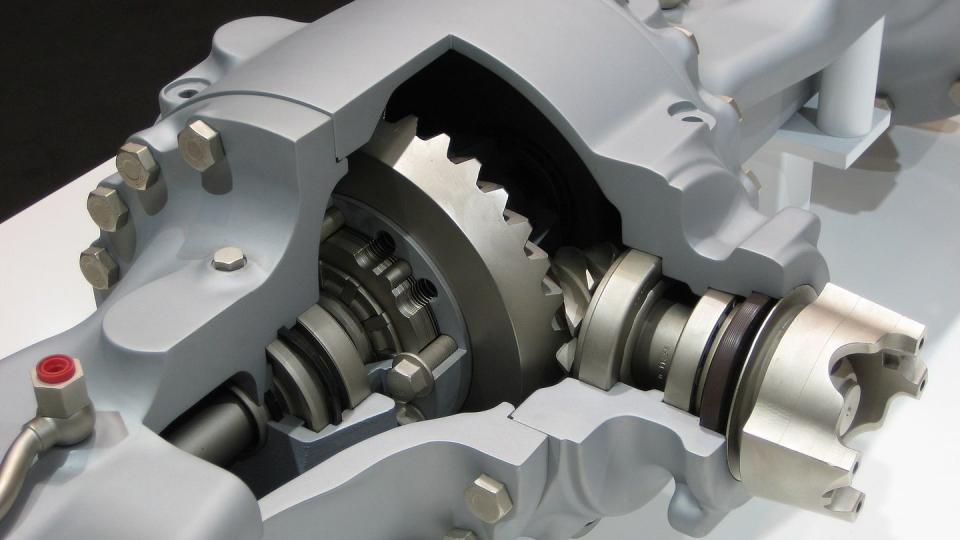
Modern-day reviewers will often say an LSD will help “rotate” the car through a corner, but that also falls short of explaining how, exactly, a limited-slip works. And that’s for a good reason: There is no straightforward single answer, as it turns out that the implementation of limited-slip differentials has varied massively through the decades. Here’s a breakdown of all the ways two wheels can make it around a corner—and how computerized traction control and electric cars might make the limited-slip obsolete.
The Calculus Behind Differentials
If you’ve ever watched a record spin on a turntable, you’ll notice that the inside spins much slower than the outside, despite the record as a whole spinning at the same RPM. This difference in rotational speed also applies to a vehicle’s wheels as it makes a turn: The inside set of tires, which have a shorter distance to travel around a corner, will spin slower than the outside tires. If both wheels were locked to spin at the same speed with a single solid axle, turning would be an ordeal and the inside wheel would screech and hop as it tried to match the outside wheel’s speed. This is the problem that differentials exist to solve, as this informational Chevrolet film from 1937 neatly demonstrates.
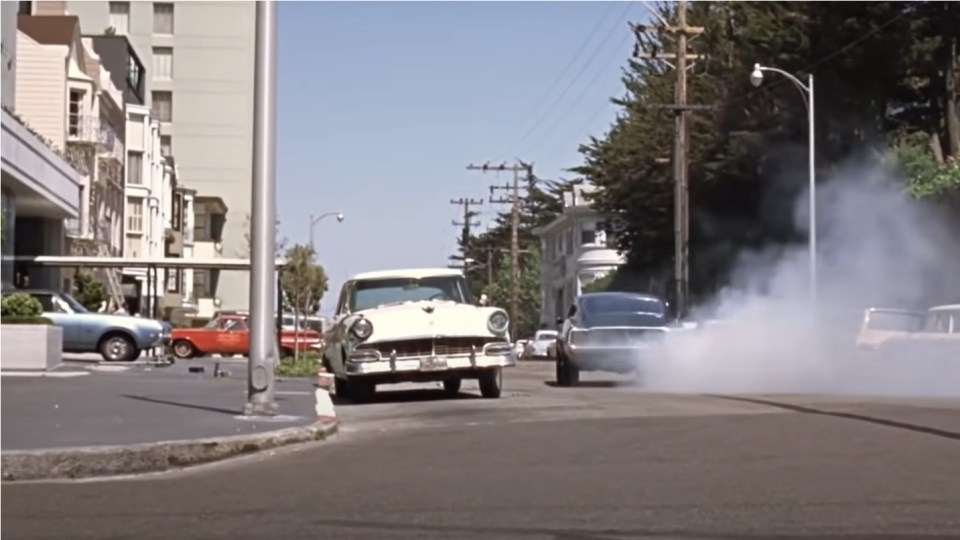
The differential’s purpose is to allow both wheels to spin at different rates. The simplest way to accomplish this is with an open differential, where both wheels can spin entirely independently. The problem with an open differential is that one wheel can be completely still and one can be spinning with 100% of the power provided by the engine. On slippery surfaces this makes it easy to get stuck, as one wheel loses all traction and spins while the other does nothing. In high-power drivetrains, an open diff results in “one-wheel peel”, where one tire does a burnout as the other does virtually nothing.
Slippin’ Out, Slippin’ In
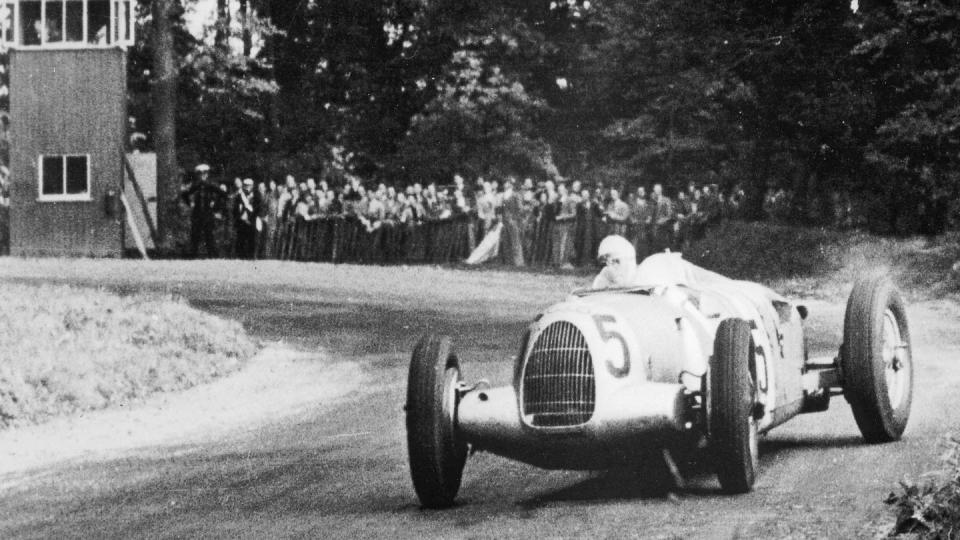
The solution to this is a limited-slip differential, which rather predictably limits the amount of slip allowed. Limited-slip differentials have been around for around ninety years, with the first example commissioned by Ferry Porsche and built by ZF for the Auto Union Type C in 1935. This early LSD was a “cam-and-pawl” type, which consists of a set of cams that apply pressure to pawls on either side of the differential. The cams only engage when wheelslip forces them to one side or another to engage.
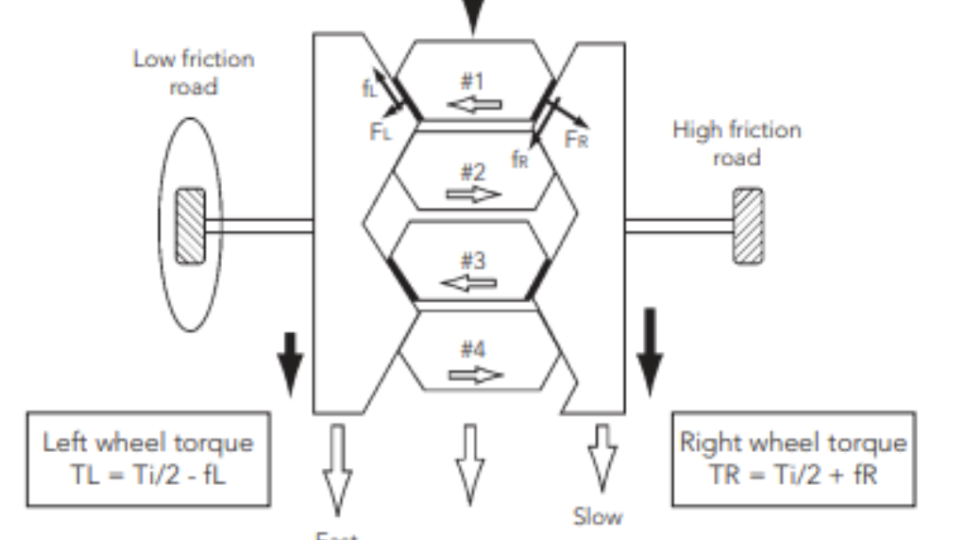
A modernized version of the cam-and-pawl type limited-slip, known as the “Suretrac”, was used in the 2005 “bugeye” Subaru Impreza STI. Subaru used this design for the front and rear differentials of the STI because “...they only activate under drive [power] and do not respond to differences in left & right wheel cornering speed when coasting,” which helps reduce understeer off-throttle. However, due to the number of moving parts and high friction involved, cam-and-pawl differentials generally wear out quickly and have fallen out of favor.
The Defense Is Wrong

A vastly more common type of limited-slip differential became increasingly popular in the late Fifties and early Sixties, known as a plate limited-slip. In this differential, a series of clutch plates transfer power to the slipping wheel, while allowing completely free rotation when not needed. This system has been known under a variety of trade names, such as Studebaker’s Twin-Traction, Buick’s Positive Traction, Pontiac’s Safe-T-Track, and of course Chevrolet’s Positrac.
While Positrac has seen usage as a generic name for all limited-slip systems, it (and the other Sixties-era limited-slip differentials mentioned above) works in a specific manner. Under power, pressure is applied to a mechanism that applies compression to clutch plates on either side of the input shaft. The mechanism (which in modern cars is made from a combination of springs and bevel gears) applies more force to the clutches when more torque is supplied to the differential.
These clutch plates intentionally slip a bit (the amount they slip can be changed by varying the friction material of the plates), which allows for the differential to still work as needed in normal handling and turning, but they do not fully slip, which prevents one-wheel-peel in extreme conditions or under high power loads. In a straight line at a constant speed, the clutches do not rub against each other at all, which dramatically reduces wear. While plate LSDs have been around for over sixty years in road cars, they are still used today in very high-performance applications, such as BMW’s M2 CS. However, their simplicity left room for further improvement with the advent of modern machining and computerized systems.
Torque Sensing
Another way to direct power to a pair of wheels is via torque sensing. When this is done the mechanical way, it’s known as a Torsen (or helical) differential. While the helical differential design was first invented in the late Fifties, the material science required to build them reliably was complex, so their first application wasn’t until the Humvee in the mid-1980s. In a Torsen (TORque SENsing) differential, according to the Torsen company, “the friction [of the differential] comes from our unique helical gearing.” The helical gearing at the center of the Torsen differential is highly customizable and allows for different power transfer on both acceleration and deceleration.
Torsen claims that this unique gearing “gives Torsen the ability to support a lot of traction imbalance when under heavy throttle conditions, like exiting a corner… and allows for more aggressive power delivery… Yet, it still can differentiate freely and smoothly at low torque levels, so the car is docile and easy to drive and maneuver.” Torsens are also quiet and generally require little maintenance, as the gear sets are meant to last the life of the car. Their sole downside is that when one wheel is completely unloaded (in the air), no power is transmitted to either wheel.
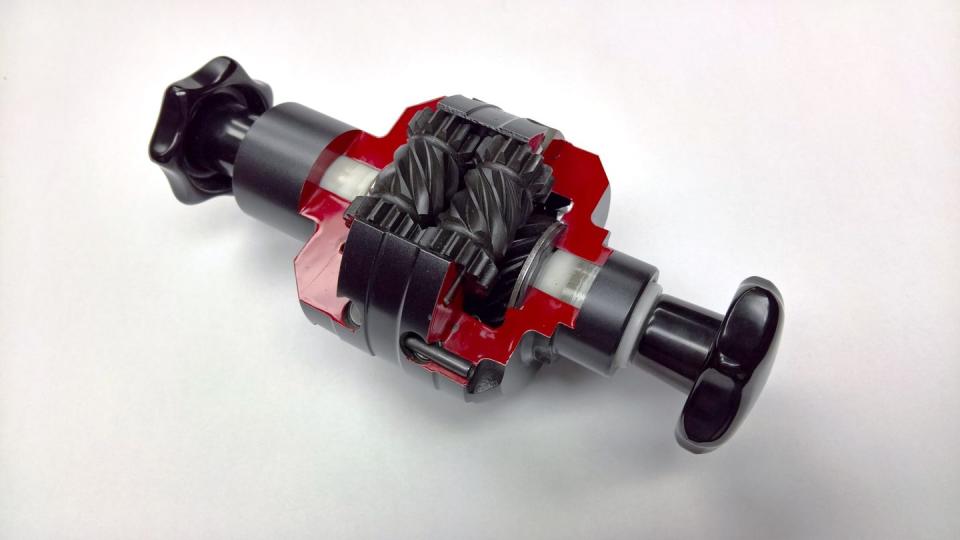
I am not going to pretend I understand how, exactly, a Torsen’s helical gearing works. Torsen differentials are wildly popular, however, so they clearly do work. While plate-type LSDs are still popular for extremely high-performance racing applications where comfort is an afterthought (and wheels sometimes go in the air), Torsens’ blend of comfort, quiet, and power delivery make them much more commonplace in high performance road cars.
Rocking Down Electric Avenue
The final innovation in differentials has been, of course, technology. While all of the differentials described above route power mechanically—that is, power input results in a fixed power output, which can’t be changed—some modern systems can choose how they route power on the fly. This is known as “active torque vectoring”, and it can be accomplished through a variety of means.
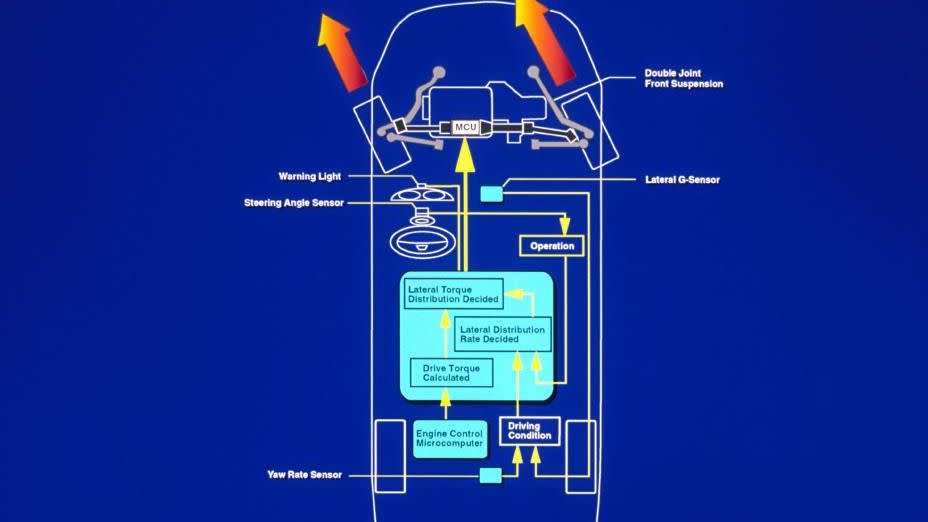
The first car to implement active torque vectoring was the ‘97 Honda Prelude Type-SH, which called it the “Active Torque Transfer System” (ATTS). ATTS works by coupling an electromagnetic solenoid to a hydraulic clutch (essentially, a miniature automatic transmission) and attaching that to the output axles; the solenoid increases pressure on the necessary clutch when the car’s ECU senses wheelslip. This pressure increases the resulting torque on the gripping wheel’s output shaft, same as a traditional limited-slip.
However, since the system is electronically controlled, power can be routed at will, unlike a traditional limited-slip; ATTS used this ability to send extra power to the outer wheel—the one that was spinning faster already—in hard cornering, to create positive steering input and actively yaw the car through the corner. (Mitsubishi released a similar system in the same model year on the Lancer Evolution called “Active Yaw Control”.)
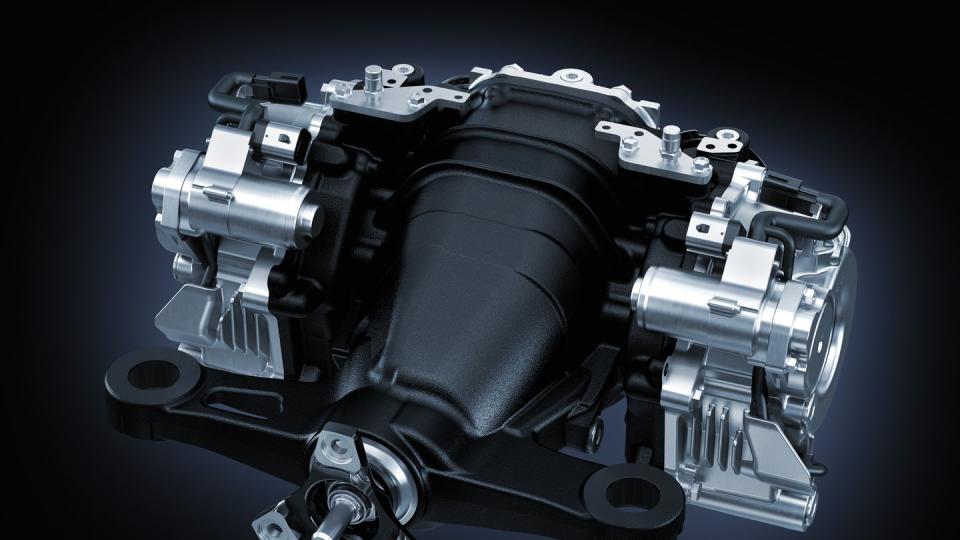
The next evolution came with fully electronic torque vectoring, such as in Lexus’s Torque Vectoring Differential (first seen in the halo-car RC F), which uses a brushless electric motor to vary the pressure applied to a clutch pack and change power output. This has the same benefits as the Honda and Mitsubishi hydraulic systems, but with significantly more immediate response, and less space and weight.
In recent years, some cars have seen the differential done away with altogether. In Acura’s newest NSX, instead of directing power from a single drive unit to each front wheel, the front wheels each get a motor. This skips the step of needing a differential and simply applies tractive power—and yaw force—to the wheel that needs it, when it needs it. This innovation has begun to make its way to an increasing number of EVs; Lucid’s newest high-performance variant of the Air, the Sapphire, has a pair of rear motors specifically to assist with turn-in and help actively yaw the behemoth around a track.
As motor costs continue to fall, it’s likely more high-performance EVs will adopt this strategy, as it allows for the most direct, immediate, and powerful application of torque. While it’s unlikely differentials will ever be completely obsolete, it’s possible that counting motors becomes more common than inquiring about Torsens vs. clutch-types.
You Might Also Like

 Yahoo Autos
Yahoo Autos 